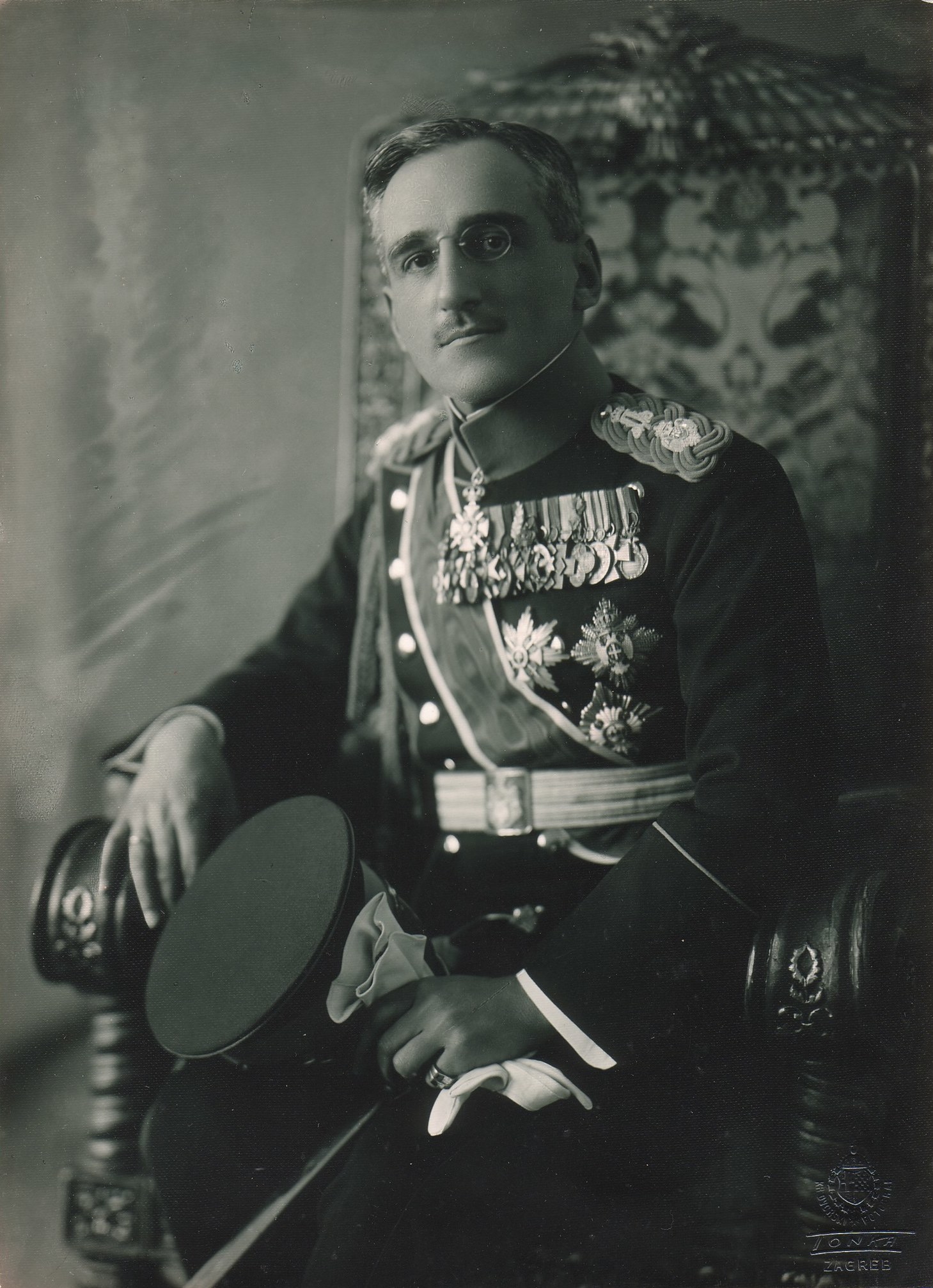© Unofficial Royalty 2024

King Alexander I of Yugoslavia, Credit – Wikipedia
December 16, 1485 – Birth of Catherine of Aragon, Queen of England, daughter of King Ferdinand II of Aragon and Queen Isabella I of Castile, first wife of King Henry VIII of England, mother of Queen Mary I of England, at the Archbishop’s Palace in Alcalá de Henares in the Kingdom of Castile, now in Spain
In 1501, Catherine married Arthur, Prince of Wales, the heir of King Henry VII of England. Less than five months later, Arthur died, probably of the sweating sickness, and 16-year-old Catherine was left a widow. Catherine was kept in England, never to return to Spain. King Henry VII died in 1509, and his 17-year-old Henry succeeded him as King Henry VIII. Two months later, King Henry VIII married 23-year-old Catherine. Catherine had six pregnancies, however, only one child, the future Queen Mary I, survived. By 1525, Henry VIII was infatuated with Anne Boleyn and dissatisfied that his marriage to Catherine had produced no surviving sons. He sought to have their marriage annulled, setting in motion events that led to the Reformation in England and the establishment of the Church of England. In 1533, Catherine and Henry’s marriage was declared invalid and Henry married Anne Boleyn. Catherine was banished from the court and Henry refused her the right to any title but “Dowager Princess of Wales” in recognition of her position as his brother’s widow. She was forbidden to see her daughter Mary. Catherine suffered these indignities with patience and told her women not to curse the new queen, Anne Boleyn. She spent most of her time doing needlework and praying.
Unofficial Royalty: Catherine of Aragon, Queen of England
December 16, 1702 – Death of Henry FitzJames, 1st Duke of Albemarle, Illegitimate son of King James II of England in Bagnols-sur-Cèze, France, his burial site is unknown.
Henry FitzJames, 1st Duke of Albemarle was the illegitimate son of King James II of England and his mistress Arabella Churchill. Like his full brother James FitzJames, Henry was raised in France. In 1688, the Glorious Revolution forced James’ father King James II of England to vacate the throne in favor of his daughter (and James’ half-sister) Queen Mary II and her husband and first cousin (also James’ first cousin) King William III. Unlike his full brother James, Henry was not created a duke while his father was still King of England. In 1696, Henry was created Duke of Albemarle, with the subsidiary titles of Earl of Rochford and Baron Romney but the title was only recognized by Jacobites. In 1700, Henry married Marie Gabrielle d’Audibert de Lussan, from a French noble family. The couple had one daughter who died five months after Henry’s death, Lady Christine Marie Jacqueline Henriette FitzJames, who became a nun. On December 16, 1702, in Bagnols-sur-Cèze, France, 29-year-old Henry suddenly died. His burial site is unknown.
Unofficial Royalty: Henry FitzJames, 1st Duke of Albemarle
December 16, 1790 – Birth of King Leopold I of the Belgians at Ehrenburg Palace in Coburg, Saxe-Coburg-Saalfeld, now in Bavaria, Germany
Birth name: Prince Leopold Georg Christian Friedrich of Saxe-Coburg-Saalfeld
Born Prince Leopold of Saxe-Coburg-Saalfeld, King Leopold was the uncle of both Queen Victoria and her husband Prince Albert. Leopold’s first marriage in 1816 to Princess Charlotte of Wales, the heir and the only child of the future King George IV of the United Kingdom, tragically ended when Charlotte delivered a stillborn son and died of postpartum hemorrhage. In 1831, the southern provinces of the Netherlands rebelled against Dutch rule and became a new country, Belgium. Leopold agreed to become the first King of the Belgians. Leopold had to marry to provide for the Belgian succession, and so in 1832, he married Princess Louise-Marie of Orléans, daughter of Louis-Philippe I, King of the French. The couple had four children. Leopold again became a widower when Louise-Marie died in 1850, at the age of 38 from tuberculosis. Leopold helped arrange the marriage of his niece Queen Victoria, the daughter of his sister, to his nephew Prince Albert of Saxe-Coburg and Gotha, son of his brother. Even before she succeeded to the throne, Leopold had been advising Victoria by letter, and after her accession continued to influence her. Leopold had a twenty-year relationship with Arcadie Claret with whom he had two sons.
Unofficial Royalty: King Leopold I of the Belgians
December 16, 1888 – Birth of King Alexander I of Yugoslavia in Cetinje, Principality of Montenegro, now in Montenegro
Alexander became King of the Serbs, Croats, and Slovenes upon the death of his father King Peter I in 1921. The following year, he married Princess Maria of Romania, the daughter of King Ferdinand of Romania and Princess Marie of Edinburgh. The couple had three sons including the future King Peter II of Yugoslavia. In 1929, King Alexander abolished the constitution and changed the country’s name to the Kingdom of Yugoslavia. He later ordered a new constitution that gave more power to the King and allowed him to appoint the government’s upper house. On October 9, 1934, while driving through the streets of Marseilles, France with the French Foreign Minister, King Alexander was killed when a gunman approached the car and shot him twice. The assassin was a member of the Internal Macedonian Revolutionary Organization.
Unofficial Royalty: King Alexander I of Yugoslavia
Unofficial Royalty: Assassination of Alexander I, King of Yugoslavia
December 16, 1909 – Death of Adelaide of Löwenstein-Wertheim-Rosenberg, wife of King Miguel of Portugal (after he was deposed); at St. Cecilia’s Abbey in Ryde, Isle of Wight, United Kingdom, buried at the Monastery of São Vicente de Fora in Lisbon, Portugal
Adelaide married King Miguel I of Portugal after he was deposed and lived with him in exile in the Grand Duchy of Baden. Miguel died leaving 35-year-old Adelaide with seven young children. She arranged prominent marriages for her children and is the ancestor of the current royal families of Belgium, Liechtenstein, and Luxembourg, as well as the former royal families of Austria, Bavaria, Portugal, and Romania. In 1895, Adelaide retired to the Abbey of Sainte-Cécile in Solesmes, France, and two years later, she professed as a nun. The cloister later moved to the Isle of Wight in England, first in Cowes and then settling at Saint Cecilia’s Abbey in Ryde.
Unofficial Royalty: Adelaide of Löwenstein-Wertheim-Rosenberg
December 16, 1955 – Birth of Prince Lorenz of Belgium, Archduke of Austria Este, at the Belvedere Clinic in Boulogne-Billancourt, Hauts-de-Seine, France
Full name: Lorenz Otto Carl Amadeus Thadeus Maria Pius Andreas Marcus d’Aviano
Lorenz is the husband of Princess Astrid of Belgium. In 1995, Lorenz was created Prince of Belgium in his own right. His father Archduke Robert of Austria-Este was the second son of Karl I, the last Emperor of Austria. Since 1996, Lorenz has been the head of the House of Austria-Este, a cadet branch of the House of Habsburg-Lorraine.
Unofficial Royalty: Prince Lorenz of Belgium, Archduke of Austria Este
December 16, 1965 – Death of Queen Sālote Tupou III of Tonga at Auckland City Hospital in Auckland, New Zealand; buried at the Malaʻekula Royal Burial Grounds in Nukuʻalofa, Tonga
Famed for her stature (6 feet 3 inches, 270 pounds) and her appearance at the coronation of Queen Elizabeth II of the United Kingdom, Queen Sālote Tupou III of Tonga was the first Queen Regnant of the Kingdom of Tonga and its longest-reigning monarch. In 1918, her father King George Tupou II died at the age of 43 and 18-year-old Sālote became Queen of Tonga. During her reign, Sālote sought to improve the quality of life of the people of Tonga through the expansion of women’s rights and the construction of roads and health facilities. In December 1953, Queen Elizabeth II and her husband Prince Philip visited Queen Sālote in Tonga during their world tour of Commonwealth nations. Since then, the British royal family has remained close to the Tongan royal family. In November 1965, Queen Sālote flew to Auckland, New Zealand for treatment of diabetes and cancer. She was admitted to the hospital on December 12, 1965, with pleurisy and her condition steadily worsened, and she died at the age of 65.
Unofficial Royalty: Queen Sālote Tupou III of Tonga
December 16, 2023 – Death of Sheikh Nawaf Al Ahmad Al Sabah, Emir of Kuwait
Upon the death of his half-brother Sabah IV Al-Ahmad Al-Sabah, Emir of Kuwait on September 29, 2020, 83-year-old Crown Prince Nawaf Al-Ahmad Al-Sabah was named by the Kuwaiti Council of Ministers as his successor. During a special session of the National Assembly on September 30, 2020, Nawaf Al-Ahmad Al-Jaber Al-Sabah, 16th Ruler and 6th Emir of Kuwait, took the constitutional oath as Emir of Kuwait.
Unofficial Royalty: Sheikh Nawaf Al Ahmad Al Sabah, Emir of Kuwait
This article is the intellectual property of Unofficial Royalty and is NOT TO BE COPIED, EDITED, OR POSTED IN ANY FORM ON ANOTHER WEBSITE under any circumstances. It is permissible to use a link that directs to Unofficial Royalty.

















